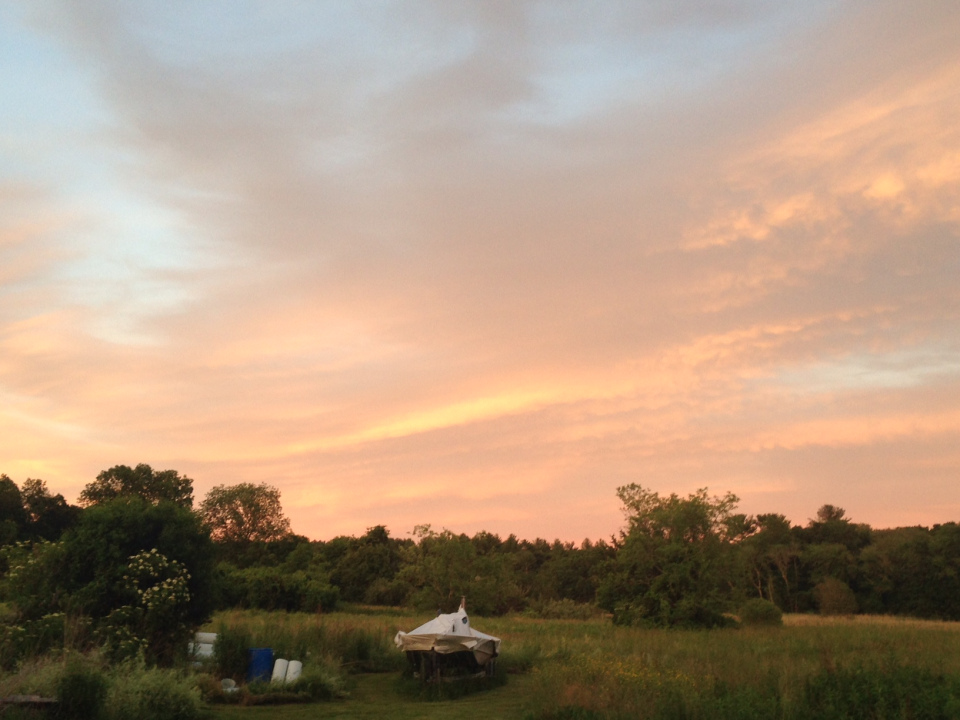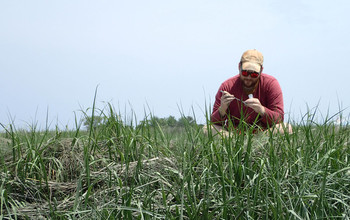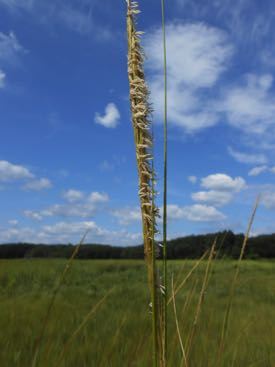These past few weeks we’ve stayed up way past our bedtimes, strapped on our headlamps, and headed out to the marsh for sampling during extremely high tides in the middle of the night. Why do we venture out during this dark, wet, dangerous time? We’re trying to catch one of the marsh’s most important marsh consumers (and one of my personal favorite fish).
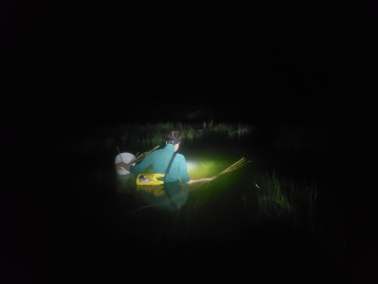
The ecosystems of Plum Island marshes run through one type of tiny little fish, the mummichog. These little guys’ funny name comes from the Narragansett word for “going in crowds”, and chog crowds dominate the creeks that cut through the marsh. But that’s not enough for them; during these extreme high tides, they leave their marine homes, travel up and out of the creeks onto the flooded marsh platform, and feast on all of the insects, spiders, and other invertebrates that might have been surprised by the sudden influx of cold, salty water in their usually dry terrestrial habitat. Then they race back down, trying to get back into the creek before the receding tide leaves them (literally) high and dry. This is incredibly important for their growth, but also for the ability of the system as a whole to support big fish we all love to catch. These little guys gather all of that energy made on the land and bring it all back down to the marine ecosystem allowing these areas to support more of the bass, flounder, bluefish, and other fish we all love to catch. You can think of these little guys as a bridge, connecting these two separate areas of the marsh, linking them so that they function as one, unified system.
How do we study this link? We use a variety of traps and nets, strategically placed across the marsh, that will not only catch these mighty minnows (and any other animals making the same voyage), but will tell us how many of them are using a specified area of marsh. Flume nets and lift traps installed in permanent spots ranging from the edge of the creek to a set distance back from it need to be raised dring the flooding tide; hence the reason for our nocturnal expeditions. Doing this will help us answer questions like “how much of the marsh do fish use?”, “do they eat more bugs as they venture further away from their aquatic home?” “How does this link between the land and sea change with altered access to the marsh?” Hopefully, our soggy, muddy, nighttime exploits into the flooded marsh will give us some answers to these questions. The tide goes out, the sun comes up, and we venture out to the marsh again, to collect the fruits of our nocturnal adventure!
High tide tonight is at 1
We’re up all night to get some (mummichogs)
The marsh at night is good fun
We’re up all night to catch mummi(chogs)
– Justin Lesser (Ph.D. Student, University of Louisiana at Lafayette)
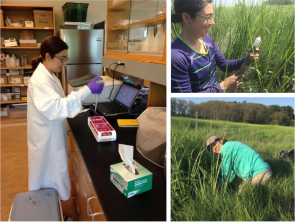
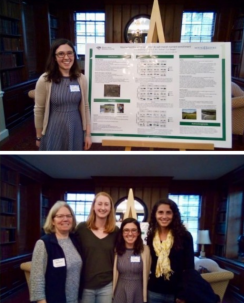

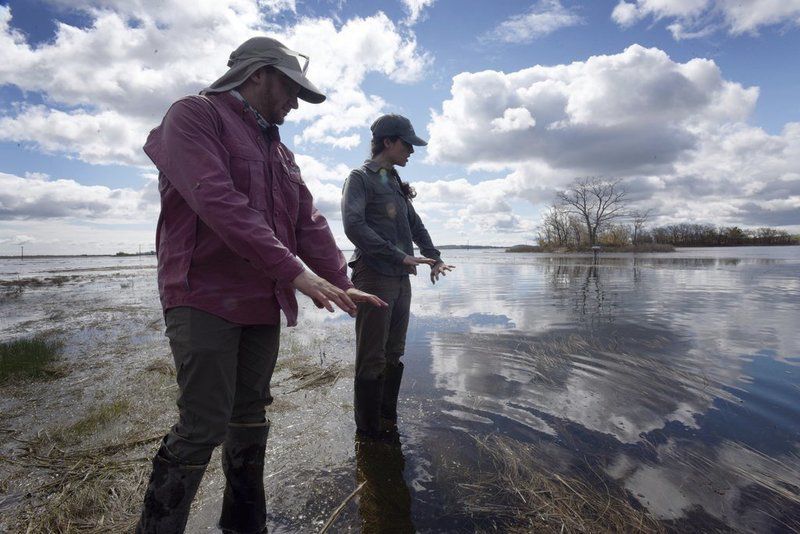
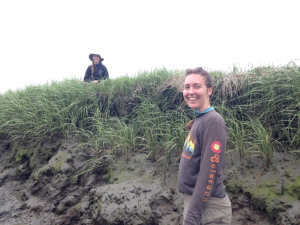
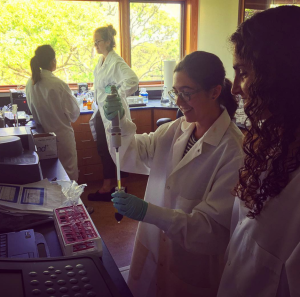
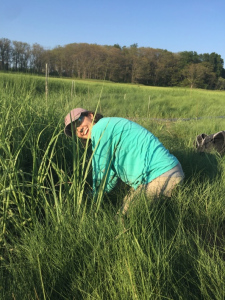
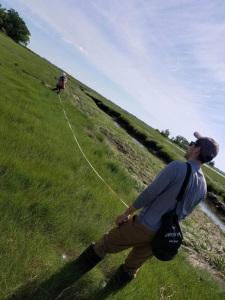 Imagine for a moment that you are a crab larva. Floating in the middle of an urban estuary (say, the Port of Rotterdam in the Netherlands), you just hatched, and are one of millions of little baby crabs hoping to survive long enough to make it to adulthood. Then suddenly, inexplicably, you are sucked up into a strong current that you don’t understand. The sun disappears, and you are surrounded by thousands of your brothers and sisters, but also many other larvae that you don’t recognize. Time seems to stand still, and you do what you can to make the best of a bad situation. Then suddenly, the same current again pulls you, but now in the opposite direction, back the way you came. Hooray, you are free! But wait, this new water feels different; this is not at all what you remembered of your home. By this time, you are a little older, a little larger, and a little bit more aware of your surroundings. You recognize you must be in a different place entirely, but you again make the best of a bad situation, and settle along the marshy shores of your new locale (not knowing you just entered Boston Harbor). You grow into an adult, and you discover to your relief that your home is not so bad after all. Predators don’t recognize you as prey, and parasites don’t infect you. So you yourself then reproduce, your offspring survive in massive numbers, and your species excels in this new home; a truly crabby paradise.
Imagine for a moment that you are a crab larva. Floating in the middle of an urban estuary (say, the Port of Rotterdam in the Netherlands), you just hatched, and are one of millions of little baby crabs hoping to survive long enough to make it to adulthood. Then suddenly, inexplicably, you are sucked up into a strong current that you don’t understand. The sun disappears, and you are surrounded by thousands of your brothers and sisters, but also many other larvae that you don’t recognize. Time seems to stand still, and you do what you can to make the best of a bad situation. Then suddenly, the same current again pulls you, but now in the opposite direction, back the way you came. Hooray, you are free! But wait, this new water feels different; this is not at all what you remembered of your home. By this time, you are a little older, a little larger, and a little bit more aware of your surroundings. You recognize you must be in a different place entirely, but you again make the best of a bad situation, and settle along the marshy shores of your new locale (not knowing you just entered Boston Harbor). You grow into an adult, and you discover to your relief that your home is not so bad after all. Predators don’t recognize you as prey, and parasites don’t infect you. So you yourself then reproduce, your offspring survive in massive numbers, and your species excels in this new home; a truly crabby paradise.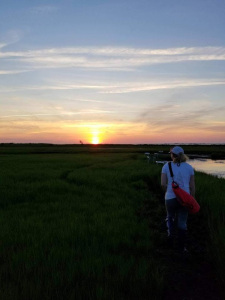 Congratulations! You just experienced what it was like to be an invasive (i.e. non-native, non-indigenous, etc.) species transported from Europe to the Eastern United States by ballast water from a commercial vessel. In order to maintain buoyancy and pitch while at sea, ships take on various kinds of ballast including rocks and water. Rock ballast was more commonly used in early shipping in New England in the 17th, 18th, and 19th centuries. In fact, the first arrival of the European green crab Carcinus maenas to New England was through British and American merchants unloading rocks (which also contained crabs) at ports along the Gulf of Maine. A second wave of green crabs was introduced to the eastern seaboard more recently in the 1980s through water ballast (much like your own crab experience). Although seemingly beneficial for the crab, bioinvasions rapidly became a problem by the mid to late 1980s not only for native organisms, but also for people. In 1988, the zebra mussel was introduced accidentally to the Great Lakes in North America from Bulgaria in Europe. A fouling species of mussel that grows on practically any surface it touches, intake pipes from Lake Michigan to Chicago were clogged for weeks until utility companies were able to replace the critical infrastructure. The result: zebra mussels cost taxpayers millions to remediate the problem. Therefore, it is incredibly important to continue to understand global effects of bioinvasions on a variety of ecosystems including the Plum Island Estuary, and how to prevent their spread; no matter how much those crabs need a change of scenery!
Congratulations! You just experienced what it was like to be an invasive (i.e. non-native, non-indigenous, etc.) species transported from Europe to the Eastern United States by ballast water from a commercial vessel. In order to maintain buoyancy and pitch while at sea, ships take on various kinds of ballast including rocks and water. Rock ballast was more commonly used in early shipping in New England in the 17th, 18th, and 19th centuries. In fact, the first arrival of the European green crab Carcinus maenas to New England was through British and American merchants unloading rocks (which also contained crabs) at ports along the Gulf of Maine. A second wave of green crabs was introduced to the eastern seaboard more recently in the 1980s through water ballast (much like your own crab experience). Although seemingly beneficial for the crab, bioinvasions rapidly became a problem by the mid to late 1980s not only for native organisms, but also for people. In 1988, the zebra mussel was introduced accidentally to the Great Lakes in North America from Bulgaria in Europe. A fouling species of mussel that grows on practically any surface it touches, intake pipes from Lake Michigan to Chicago were clogged for weeks until utility companies were able to replace the critical infrastructure. The result: zebra mussels cost taxpayers millions to remediate the problem. Therefore, it is incredibly important to continue to understand global effects of bioinvasions on a variety of ecosystems including the Plum Island Estuary, and how to prevent their spread; no matter how much those crabs need a change of scenery!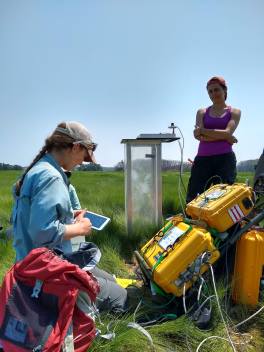
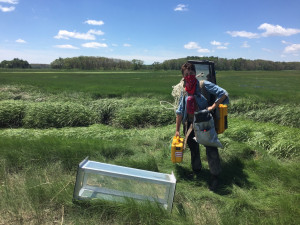
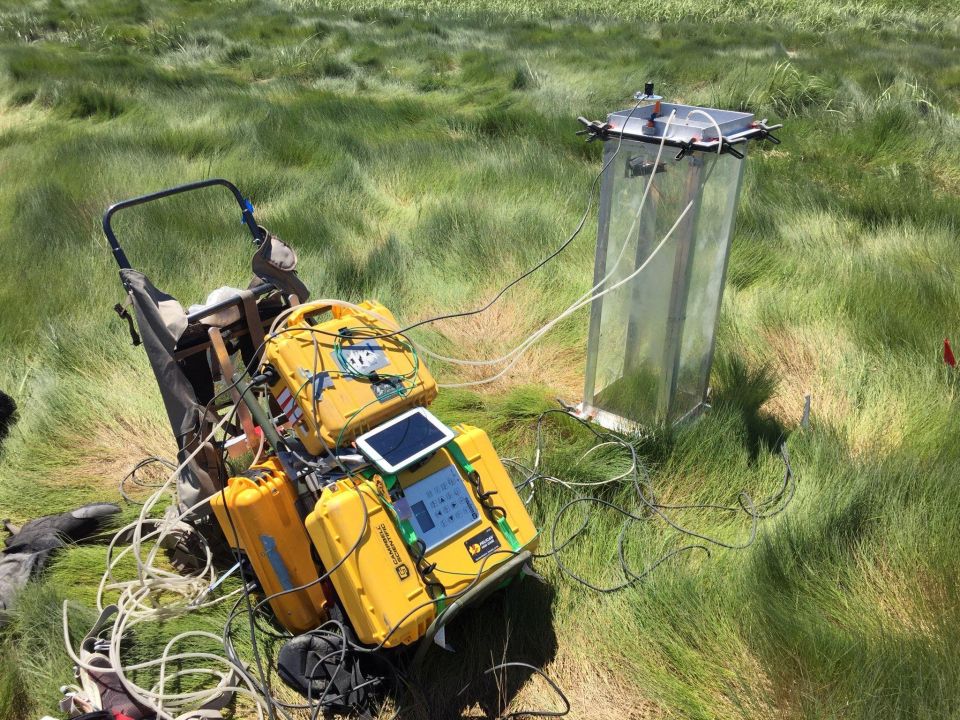
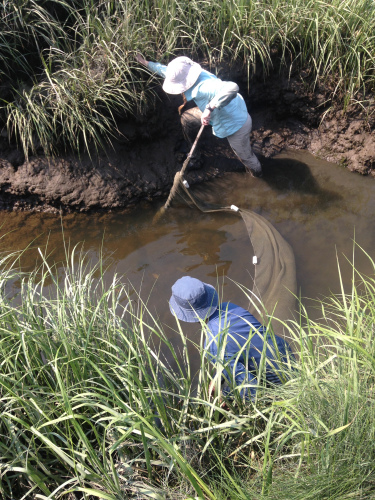 New England’s salt marshes were some of the first ecosystems I was immersed in (literally) as I began my jaunt into marine science. For many people, the draw is their tranquility, as looking out onto a cordgrass meadow gently rippling in the breeze can be quite relaxing. Something that fascinated me then, and still does now, is how these peaceful feelings can be evoked by such a harsh environment. Large, strong tides, cold, salty water, and hot, unrelenting sun all represent real hazards for animals residing in these coastal margins. Yet salt marsh critters don’t run from these dangers: in fact, food webs in these areas are designed to meet stressors head on, taking life-threatening risks in order to reap the energetic rewards that pushing these boundaries can provide.
New England’s salt marshes were some of the first ecosystems I was immersed in (literally) as I began my jaunt into marine science. For many people, the draw is their tranquility, as looking out onto a cordgrass meadow gently rippling in the breeze can be quite relaxing. Something that fascinated me then, and still does now, is how these peaceful feelings can be evoked by such a harsh environment. Large, strong tides, cold, salty water, and hot, unrelenting sun all represent real hazards for animals residing in these coastal margins. Yet salt marsh critters don’t run from these dangers: in fact, food webs in these areas are designed to meet stressors head on, taking life-threatening risks in order to reap the energetic rewards that pushing these boundaries can provide.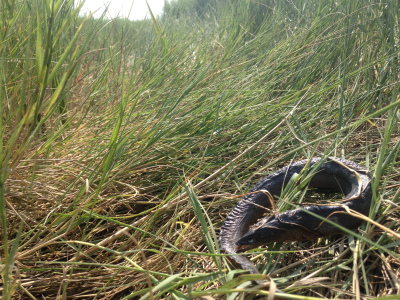 One of the most interesting effects of increased nutrient load on these coastal systems is the sloughing and disintegration of the low marsh area of the creeks, which normally act as a ramp for these mighty minnows to make their daring climb. How does the loss of that ramp affect the mummichog’s ability to bridge the two ecosystems, and what does a change in the strength of that link mean for the creek’s other residents? How does the ecosystem respond to this decoupling of the creek and high marsh? These are the questions I’m hoping to answer this summer. As we head out to West Creek with our trusty seine net to collect fish, shrimp, and other marine critters for our analyses, we come across a dead American eel on the path, stranded as the tide receded and desiccated by the strong summer sun. Clearly, the high marsh bounty is worth risking everything for, and I hope to understand how that link, and its loss, drives the function and long-term stability of these “peaceful” ecosystems.
One of the most interesting effects of increased nutrient load on these coastal systems is the sloughing and disintegration of the low marsh area of the creeks, which normally act as a ramp for these mighty minnows to make their daring climb. How does the loss of that ramp affect the mummichog’s ability to bridge the two ecosystems, and what does a change in the strength of that link mean for the creek’s other residents? How does the ecosystem respond to this decoupling of the creek and high marsh? These are the questions I’m hoping to answer this summer. As we head out to West Creek with our trusty seine net to collect fish, shrimp, and other marine critters for our analyses, we come across a dead American eel on the path, stranded as the tide receded and desiccated by the strong summer sun. Clearly, the high marsh bounty is worth risking everything for, and I hope to understand how that link, and its loss, drives the function and long-term stability of these “peaceful” ecosystems.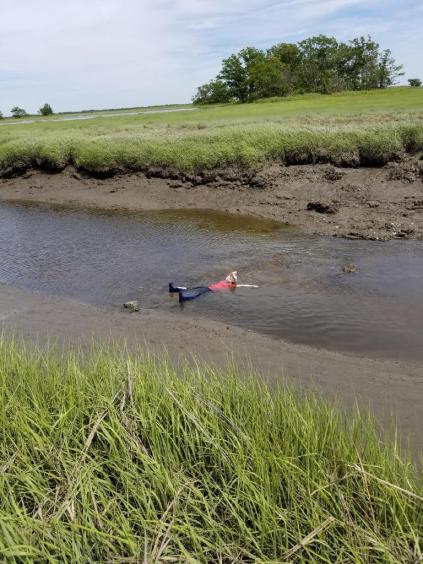 The day begins early, tide dependent of course. My team assembles. We are a small group consisting of PhD candidate Michael Roy, Jarrett Byrnes’ undergraduate lab assistant Richard Wong, and I, Byrnes lab undergraduate field tech. We gather our gear; our scientific instruments, our boots and buckets. We set out for a glorious day of experimental set up in the salt marsh. I am so excited to be here as this is my first time working in the field. This is the reason I went to college for Biology, to have a career in which I am spending copious amounts of time in nature.
The day begins early, tide dependent of course. My team assembles. We are a small group consisting of PhD candidate Michael Roy, Jarrett Byrnes’ undergraduate lab assistant Richard Wong, and I, Byrnes lab undergraduate field tech. We gather our gear; our scientific instruments, our boots and buckets. We set out for a glorious day of experimental set up in the salt marsh. I am so excited to be here as this is my first time working in the field. This is the reason I went to college for Biology, to have a career in which I am spending copious amounts of time in nature.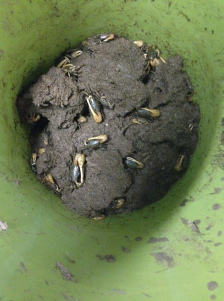 We are headed to the marsh today to catch the crabs that will be occupying the cages we built for them in the marsh. We have taken our initial measurements of the sediment strength, buried a log of peat in mesh to examine root growth, and buried small mesh bags of grass to assess how decomposition may increase as the crabs burrow into the sediment.
We are headed to the marsh today to catch the crabs that will be occupying the cages we built for them in the marsh. We have taken our initial measurements of the sediment strength, buried a log of peat in mesh to examine root growth, and buried small mesh bags of grass to assess how decomposition may increase as the crabs burrow into the sediment.